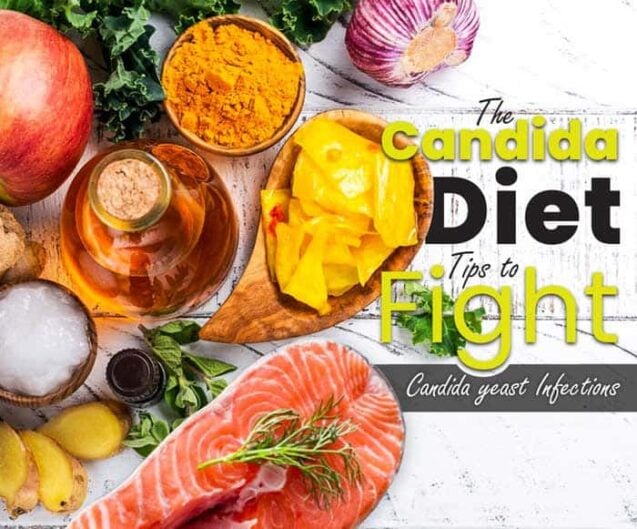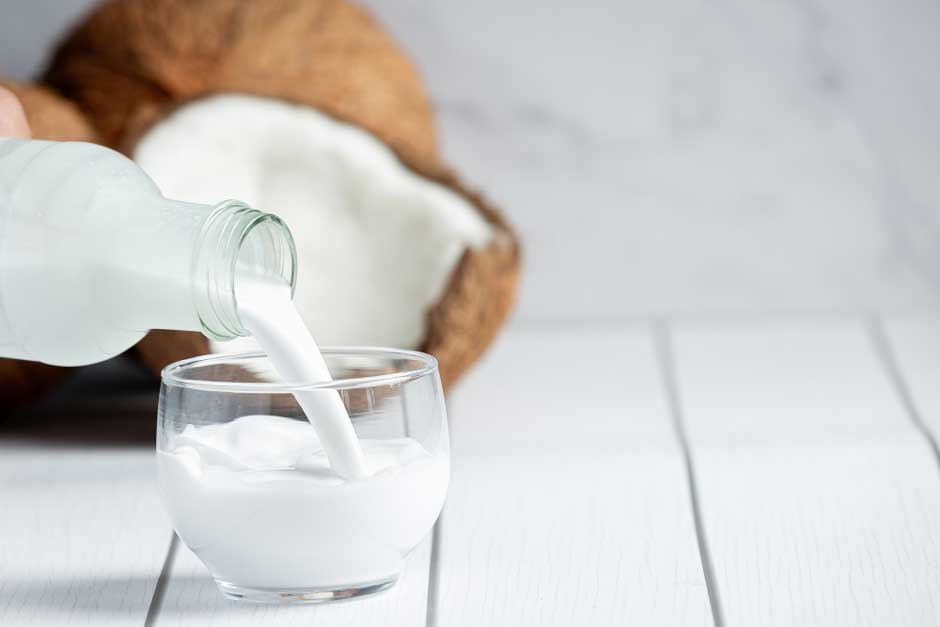A candida diet requires cutting down on drinks and foods that fuel the overgrowth of Candida. Primarily, those foods are sugar, gluten, certain dairy products, and alcoholic beverages.
The diet, instead, focuses on consuming lean proteins, non starchy veggies, probiotics, and healthy fats. The final goal of such a diet is to fight inflammation and create a healthy environment for a balanced growth of the good bacteria in your gut.
Eric Bakker, the author of an ebook on Candida talks in detail about what this infection is and how to combat it successfully.
Treating Candida With Diet
As we discussed, a Candida diet not only discourages bacteria overgrowth but also restores the growth of friendly bacteria. You can achieve these goals by taking the following measures –
Stop Fueling the Yeast
Candida lives on refined carbs, sugars, and certain yeast-containing foods like bread. That’s why it’s recommended to remove sugar, gluten, dried fruits, fermented foods, certain fruit juices, alcohol, and refined carbs.
Kill the Overgrowth
After cutting down all the inflammatory and toxic foods that are fueling Candida, you would next want to attack the already present bacteria. You can do that by consuming more of the foods that kill Candida. We will talk about those foods later in the post.
Repopulate the Gut with Good Bacteria
To do that you can take a high-quality probiotic. Probiotics are those superfoods that everyone should consume more of.
You can think of this stage as the candida cleanse as it instantly cuts off any further growth of this bacteria.
Risk Factors for Infection –
Candida infection comes with myriad risk factors including –
- Weak immune system
- Diabetes
- Antibiotics
- Birth control medication
- Using catheters in an improper manner
- Imbalance of the gut microbiome
- High levels of stress
Patients with the above-mentioned risk factors should try to address them. They can do that by introducing changes in their lifestyle and diet. Other than that, they should also incorporate stress management and make meditation a part of their routine.
Symptoms of a Yeast Infection
Although a yeast infection can be of several kinds; the most common one remains that of the vagina. The most common symptoms of a vaginal yeast infection are –
- Irritation and itching in the vulva and the regions around it
- Swelling and redness in the vagina
- Vaninal rash
- Pain and soreness around the vagina
- A burning sensation
- Pain during urination or sex
- Water discharge
- White, odor-free, thick discharge that has a cottage-cheese like consistency
3 Medicinal Foods That Can Prevent Yeast Infections
There are so many powerful foods and herbs that carry excellent anti-fungal properties. These foods are essentially like medicine which can be powerful as an anti-candida agent –
Garlic
Garlic has been studied time and again to show a powerful effect against fungal and yeast infections. It is particularly good for fighting Candida overgrowth. Garlic carries allicin, an active ingredient that is believed to inhibit Candida growth.
It does so by disrupting the walls of yeast cells. It impairs their functioning so they can no longer multiply. It is also an immune booster that can also balance your blood sugar level.
Onion
Onions can improve your detox mechanism while also rendering its antibacterial and antifungal goodness. They are an excellent prebiotic which means they are food for good bacteria. They help the population of good bacteria to grow in your gut.
Virgin Coconut Oil
Coconut oil contains capric and lauric acid. Both of these have been studied to control Candida overgrowth. Not only that, but coconut oil is also good for the immune system. It is great for keeping pathogens at bay. You can use it in a variety of ways. You can either use it for cooking, frying, or you can consume it straight from the jar.
5 Diet Tips to Fight Candida Yeast Infections
Probiotics
Probiotics carry live strains of enzymes similar to those living in our gut. A common reason for yeast infection is an inhibited growth of the good enzyme which leads to a microbial imbalance and poor digestion. Therefore, including a high-quality probiotic is one of the best things you can do for yourself. You get best probiotics for women in the market today that helps them keep vaginal infections away and stay healthy and happy.
Olive Oil
Primrose oil, avocado, flax, and olive oil – all have one thing in common. They all carry polyphenols. These are powerful antioxidants that help to control and fight the overgrowth of Candida. Oleic acid, which is a fatty acid present in olive oil, carries powerful anti-inflammatory properties that strengthen the immune system.
Cinnamon
A powerful and fragrant spice, cinnamon is another household item that is great for fighting inflammation. It also has antifungal properties. It also works by damaging the walls of yeast cells so they can die off eventually.
Apple Cider Vinegar
The only type of vinegar that is encouraged while you’re on a Candida diet is apple cider vinegar. There’s a good amount of research available which suggests that apple cider vinegar might damage the protein structures and walls of the Candida cells. It’s made from apples or apple cider to be more specific.
Consume a low-sugar Diet
Sugar is one of the worst foods for a yeast infection. Try substituting it with honey or agave syrup. Although they are a relatively better option; you should still try to maintain an unsweetened diet as much as possible.
Bottom Line
Those were some of the simple yet powerful ways to combat candida overgrowth.















